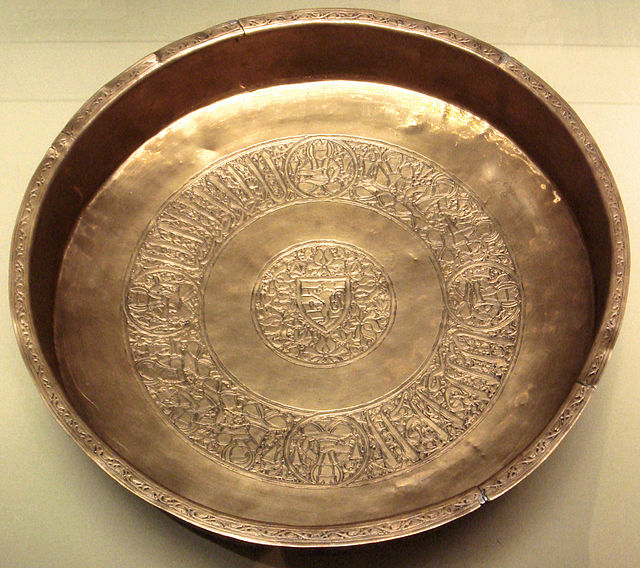The House of Lusignan was a royal house of French origin, which at various times ruled several principalities in Europe and the Levant, including the kingdoms of Jerusalem, Cyprus, and Armenia, from the 12th through the 15th centuries during the Middle Ages. It also had great influence in England and France.
Les Très Riches Heures du duc de Berry (1412/16), March: the Château de Lusignan
Battle of Hattin in which Guy de Lusignan was captured by Saladin, and Jerusalem was lost. From a copy of the Passages d’outremer, c.1490.
Guy de Lusignan and Saladin. Saladin en Guy de Lusignan, 1625 painting by Jan Lievens.
Lusignan coat of arms Detail crests above the gateway to Kyrenia Castle
The Kingdom of Cyprus was a medieval kingdom of the Crusader states that existed between 1192 and 1489. Initially ruled as an independent Christian kingdom, it was established by the French House of Lusignan after the Third Crusade. It comprised not only the entire island of Cyprus, but it also had a foothold on the Anatolian mainland: Antalya between 1361 and 1373, and Corycus between 1361 and 1448.
Ayia Paraskevi Byzantine church in Yeroskipou, Cyprus
Plate of the House of Lusignan, with coat of arms at the centre. Early 14th century, Cyprus. Louvre Museum.
Portrait of Catherine Cornaro, the last monarch of Cyprus
Cyprus gold bezant, derived from Byzantine design, 1218–1253 (left), and Cyprus Western-style silver gros 1285–1324 (right).








